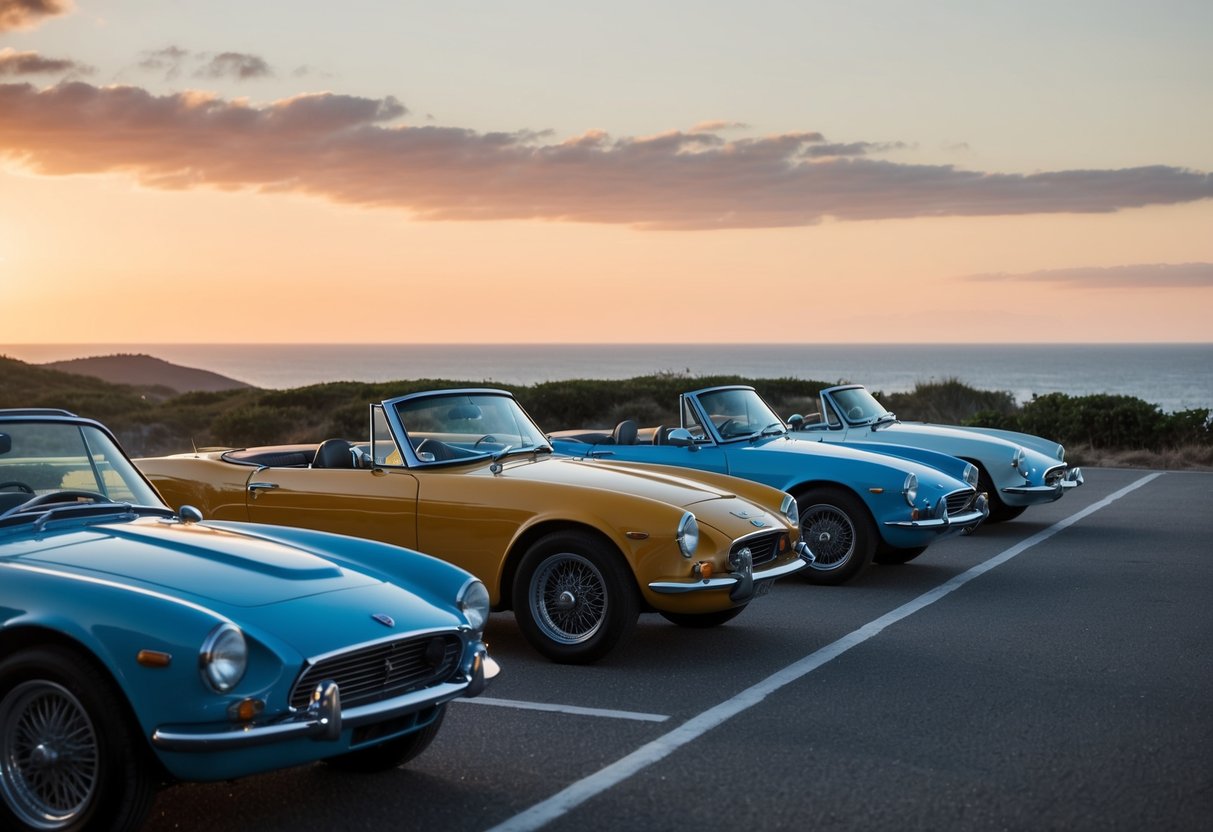
Classic convertibles hold a timeless allure that captivates car enthusiasts and casual admirers alike. These vintage convertibles are more than just vehicles; they symbolize freedom, elegance, and the joy of open-air motoring. Among these, some models have become icons due to their groundbreaking design and performance, influencing the automotive world for generations.
Whether it’s the sleek lines of a 1960s Jaguar or the enduring charm of a Ford Mustang, these vehicles embody an era where craftsmanship and artistry were at the forefront. Their open-top designs invite drivers to embrace the road while experiencing unique driving sensations that modern cars may not replicate. These convertibles are not just about nostalgia; they offer a tangible link to a past where driving was both a journey and an experience.
For those interested in automotive history, iconic design, or the simple joy that can only come from the wind in their hair, exploring classic open-top sports cars reveals both cultural significance and engineering marvels. The exploration of these cars offers insights into how automotive design has evolved while preserving elements that stand the test of time.
History of Convertibles
Convertibles, known for their open-top design, have evolved significantly since their inception in the early automobile era. The history of convertibles is characterized by technological advancements and stylistic transformations that expanded their appeal and functionality.
The Emergence of the Cabriolet
The term “cabriolet” originated in the 18th century and was initially associated with lightweight horse-drawn carriages. As automotive technology progressed in the early 20th century, the cabriolet became a symbol of personal freedom and luxury. These early models provided a distinctive blend of open-air driving and elegant design.
Car manufacturers began introducing convertible models that combined aesthetics with practicality. They gained popularity among affluent consumers who desired both style and performance. The cabriolet offered drivers an exhilarating experience, making it a favored choice for leisure driving. As engineering innovations continued, convertibles were equipped with more efficient engines and improved structural integrity to enhance safety and performance.
Decades of Luxury and Innovation
The post-war years marked a boom in convertible production as manufacturers sought to captivate consumers with new designs and technologies. Iconic models from brands like Cadillac, Ford, and Mercedes-Benz showcased the pinnacle of luxury and engineering. These cars often featured advanced features, such as power-operated tops and improved weatherproofing.
Throughout the decades, convertibles remained a hallmark of style and status. By the late 20th century, manufacturers integrated cutting-edge materials and aerodynamics, producing models that balanced performance with comfort. Convertibles evolved to suit a wide range of preferences, from nimble sports cars to elegant touring vehicles, ensuring their enduring appeal in the automotive landscape.
Iconic Convertibles and Their Designers
Classic convertibles are often revered for their elegant design and the creative minds behind them. Designers like Pininfarina and Albrecht von Goertz have left a lasting legacy with models such as the Ferrari 250 GT Spyder and the BMW 507.
Masterpieces by Pininfarina
Pininfarina stands as a quintessential name in automotive design, especially in the realm of open-top sports cars. At the forefront of this design legacy is the Ferrari 250 GT Spyder, a convertible that combines grace with high performance. Known for its sleek lines and timeless aesthetic, it became an icon of luxury and craftsmanship. The 250 GT Spyder features a distinctive front end and well-balanced proportions that enhance its aerodynamic profile. Each curve and detail reflects Pininfarina’s commitment to elegance and performance.
Pininfarina has also worked with other prestigious brands, showcasing a wide array of designs that emphasize innovation. While the Ferrari 250 GT is a standout, many other vehicles carry the signature elements that define the Pininfarina touch—simplicity harmonizing with sophistication in automotive design.
Albrecht von Goertz and the BMW 507
Albrecht von Goertz’s work on the BMW 507 is often credited with putting BMW on the map as a maker of luxury sports cars. The 507 features a distinctive kidney grille, a design element that became synonymous with the BMW brand. With clean lines and balanced proportions, Goertz crafted this convertible to be both visually stunning and functional. Each aspect of the car’s design reflects a dedication to driveability without sacrificing aesthetic appeal.
Despite facing challenges in the market initially, the BMW 507 has gained an esteemed place in automotive history. Its design is praised for blending sporty dynamism with refined elegance, embodying Goertz’s visionary style and influencing future models.



